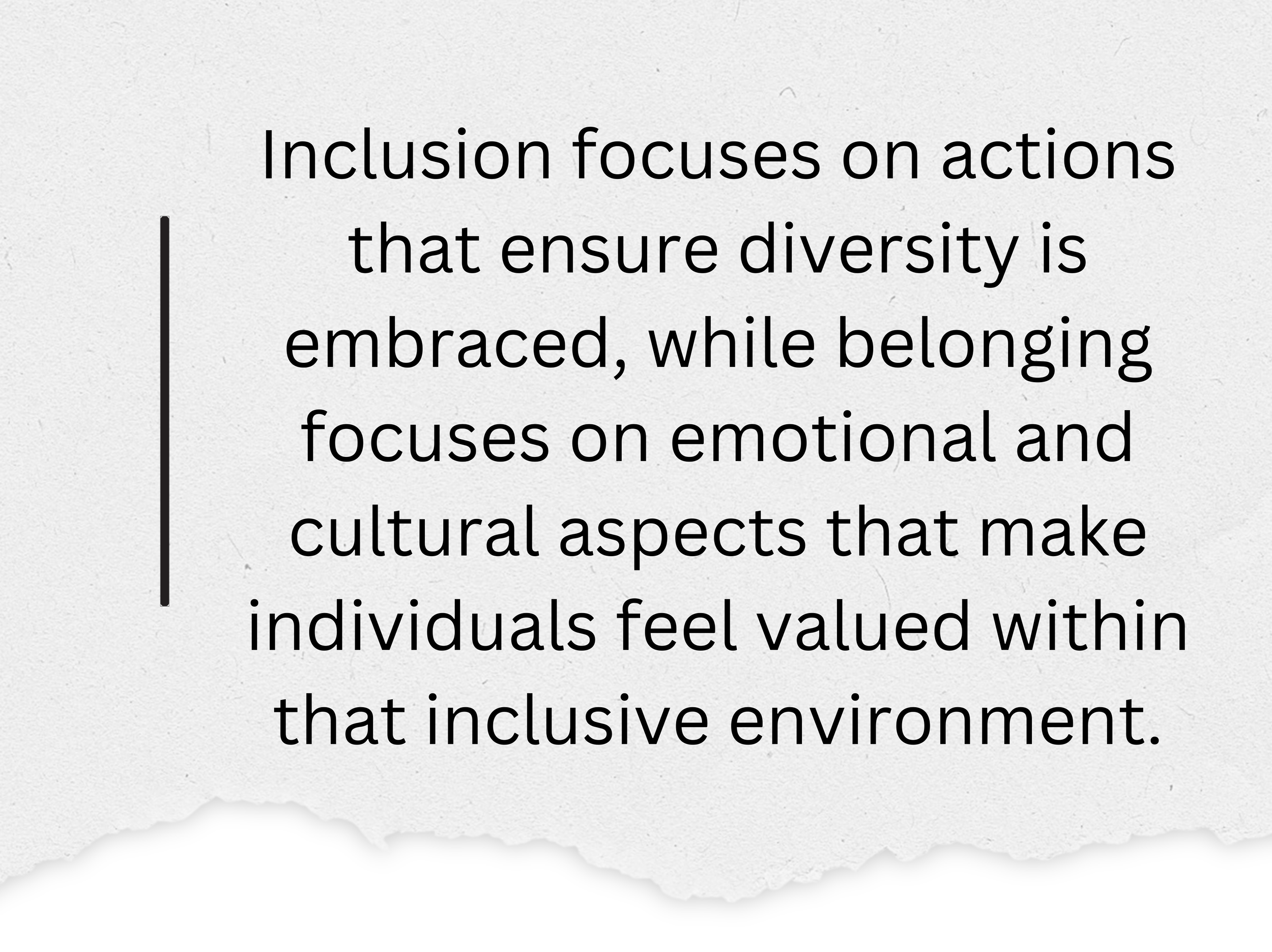Nurture Inclusion and Belonging - A Deeper Look
Earlier in October I had the wonderful opportunity to speak with employees at their annual retreat on the topic "Nurture Inclusion and Belonging". Although I touched on this topic earlier this year, it's important to revisit it now and explore it in greater depth.
During this retreat, we shared what inclusion and belonging means to us, learned about inclusive practices, discussed how we can demonstrate empathy and kindness, and talked about understanding and responding to bias and microaggressions. Let’s explore further together.
Inclusion is the practice of ensuring that individuals, regardless of their background, identity, or abilities, feel valued, respected, and supported within a group, organization, or society. It involves:
Actively engaging diverse perspectives
Creating environments where everyone has equal access to opportunities and resources
Promoting participation by eliminating barriers related to race, gender, age, disability, socioeconomic status, sexual orientation, or other factors
Belonging goes beyond being invited or included; it is about feeling a deep sense of acceptance and connection within a group or environment. When someone feels they belong, they feel valued for who they are, they can express themselves authentically, and they believe their presence matters. Inclusion focuses on the actions and practices that ensure diversity is embraced, while belonging focuses on the emotional and cultural aspects that make individuals feel secure and valued within that inclusive environment.
While this might not be new information, the key question to consider is, "How are you intentionally practicing inclusion so those around you feel a sense of belonging?".
1. Explore Inclusive Practices
Modeling these inclusive practices influences the culture in your organization that others will emulate:
Use Person First Language: describe someone by their individuality rather than defining them by their identity. An example includes using a phrase like "a person with a disability" instead of "a disabled person". This emphasizes humanity and promotes inclusivity.
Acknowledge and Respect a Person's Uniqueness: rather than stereotyping or making assumptions or generalizations based on someone’s identity, take the time to be curious, listen, and understand their individual story. Respect their preferred pronouns, names, and cultural practices.
Create a Safe Space: ensure everyone feels seen and heard and has the opportunity to contribute to the conversation and share their perspectives. Pay attention to implicit stereotypes, similarity-attraction bias, in-group favoritism, and group think and address, where appropriate.
Use Inclusive Terms: replace discriminatory or stigmatizing language with inclusive alternatives. Use gender-neutral language instead of assuming someone’s gender. Avoid language that reinforces stereotypes or biases, and instead, use terms that are inclusive and respectful. For example, instead of using terms like “young” or “old,” use “younger” or “older” to avoid ageism.
2. Demonstrate Empathy and Understand How It Connects with Kindness
The easiest way to access empathy is through active listening with interest and support. Your role is to be present, observe, and read body language.
While it is tempting, do not try not to control the conversation. Instead, create a safe space that allows others to speak openly without feeling judged. This is your opportunity to focus on understanding.
When there is a pause in the conversation, repeat key aspects of the conversation to confirm or clarify your understanding. A statement like “I heard you say…” followed by “Is that correct?” shows them you are actively listening and are focused on them. Wrap up the conversation showing support by asking how you can help.
Empathy allows you to understand and feel what others might be experiencing — their stress, sadness, or challenges. Kindness guides your actions based on that understanding.
3. Understand How Kindness is Critical to Creating an Inclusive Culture
While there are numerous reasons why kindness is critical to creating an inclusive culture, the following five reasons rise to the top:
Promotes Belonging: kindness fosters an environment where everyone feels valued and accepted, helping to reduce feelings of isolation and promoting a sense of belonging for all team members.
Encourages Open Dialogue: when kindness is practiced, people feel safer expressing their ideas and perspectives without fear of judgment, leading to more open and inclusive conversations.
Reduces Bias and Judgement: kindness encourages empathy and understanding, which helps to diminish unconscious biases and creates a more equitable environment where people are appreciated for their unique contributions.
Builds Trust Across Differences: kindness bridges gaps between people of different backgrounds, experiences, and viewpoints, fostering mutual respect and trust, which are essential for an inclusive culture.
Empowers Marginzalized Voices: In a kind workplace, individuals from underrepresented groups feel more supported and confident in speaking up, leading to a more diverse range of ideas and perspectives being shared.
By embedding kindness into workplace culture, organizations can nurture an inclusive environment where all employees feel respected and empowered.
Now what?
We explored inclusive practices, how we can demonstrate empathy by actively listening with interest and support, the connection between empathy and kindness, and how kindness helps to nurture an inclusive culture. Take the time to pause and reflect on the following questions to see where you have opportunities for growth.
How do you promote inclusivity in the workplace?
How do you demonstrate empathy?
What acts of kindness do you practice or have you observed at work?
We will explore understanding and responding to bias and microaggressions in future newsletters. Access “Six Tips to Elevate Your Leadership & Retain Talent”, a free resource you can download from our home page and visit our Culture Corner page for access to all our newsletters. Until then, be well and keep shining!
We at Cultivate and Thrive empower women leaders achieve to their goals and cultivate an organizational culture where everyone can thrive. Book a free consultation so we can learn more about you and how we can elevate your organizational culture and performance.
Subscribe to our free monthly newsletter for more valuable, easily digestible content you don’t want to miss!

